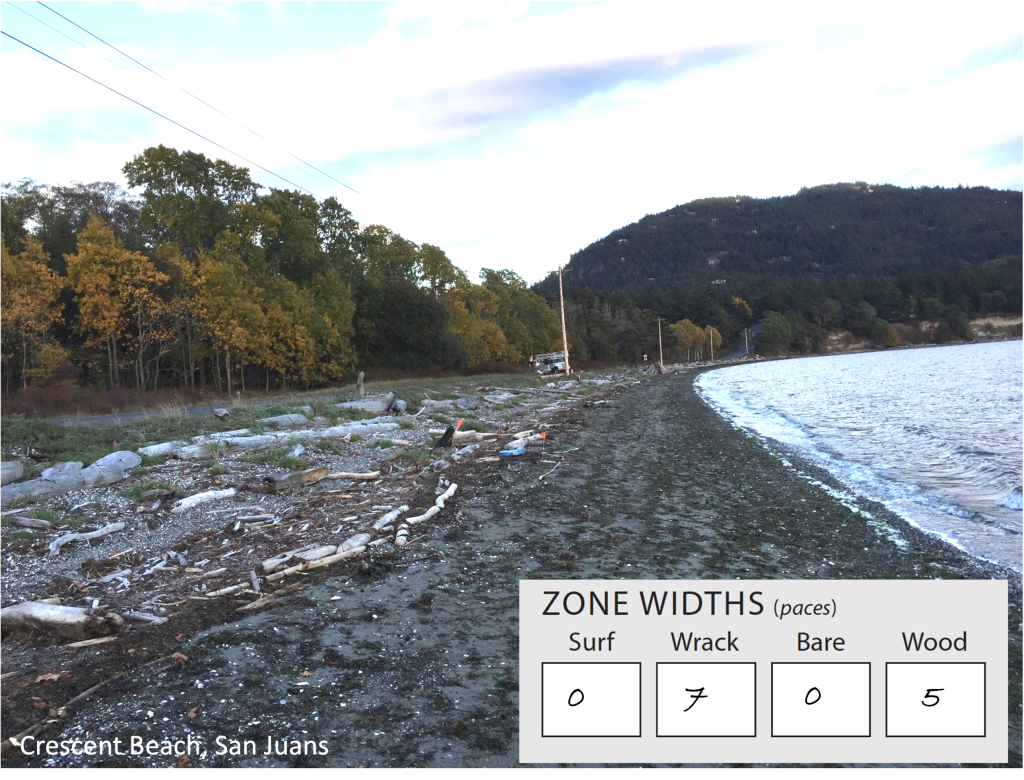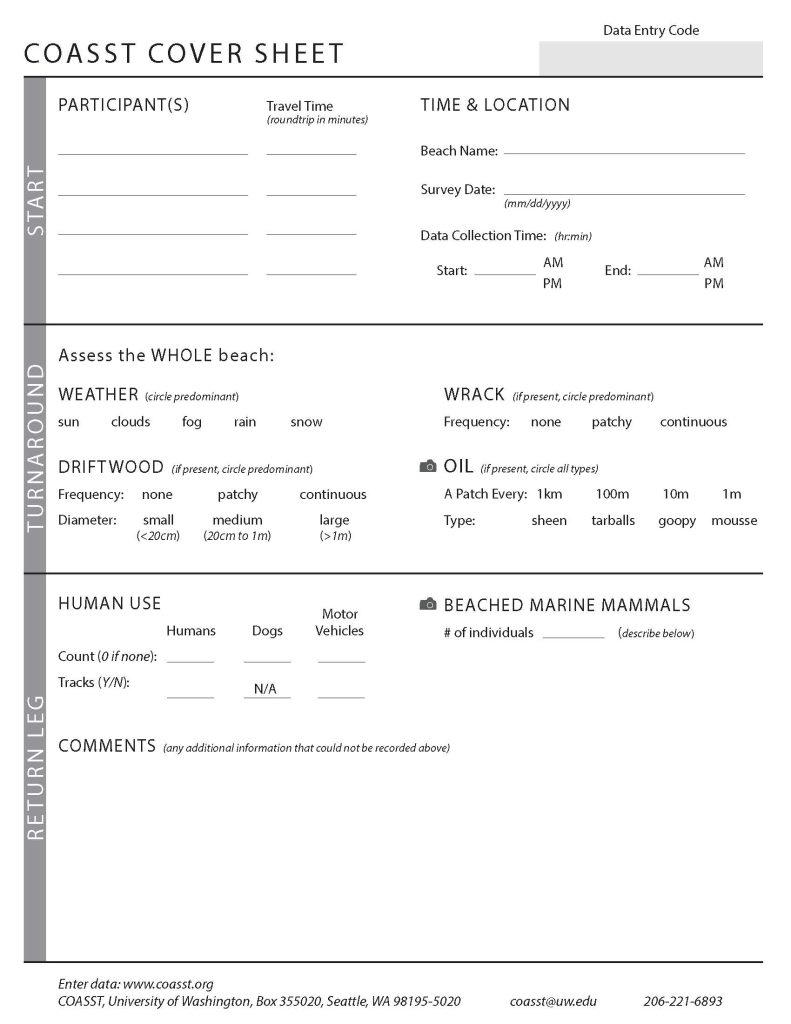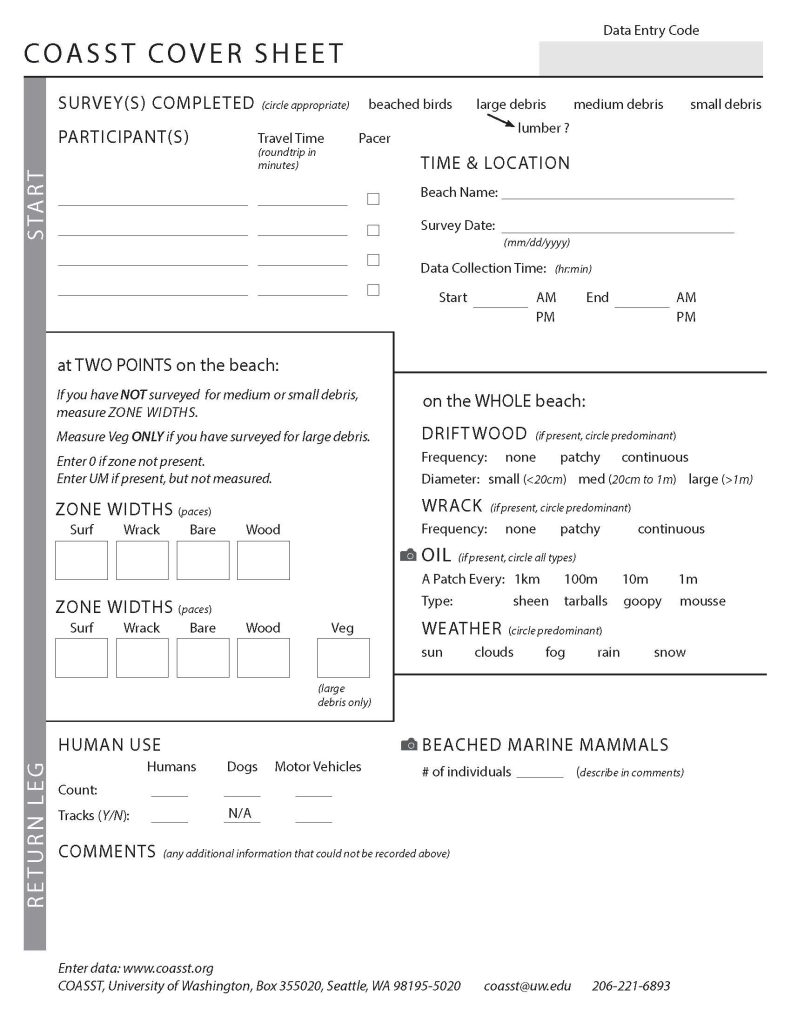Measuring the width of beach zones via pacing has been part of COASST for over a decade. During that time, plenty of COASSTers have sent in images of their beach with a ??!@#*?! comment.

- What to do when the wrack reaches from the water to the wood?
- Where is the boundary between the surf zone and the bare zone if there isn’t any wrack?
- The wood zone extends down almost to the water at one point, what should I do?
Every COASSTer has mentioned at some point that zone widths vary over their beach, with the tide, weather and time of year.
We hear you!! As we set aside our marine debris monitoring program, we are also sunsetting zone pacing.
Why did COASST collect all of that zone width information anyway? It turns out that different types of marine debris accumulate in different places on the beach. The “grabby zones” – wrack and wood – snag the medium debris moved around by the wind (plastic bags, empty drink bottles or cans). Small debris is mostly found in the wrack, because that’s where the tide deposits it. COASST has used measurements of debris density (pieces per square meter for small, or per square 10+ meters for medium) in each zone, multiplied by the zone width (because we automatically translate your paces into meters in our database) to estimate the debris load on the beach. Our first marine debris publication, by then Fulbright postdoc Kathryn Willis and COASST colleagues used the zone width data to make calculations of debris loads on (very wide) outer coast beaches in Oregon and Washington, versus the loads on the (much narrower) beaches of the Salish Sea.
To be clear, differentiating the zones on your beach is still essential! Knowing whether the carcass you find is in the wrack zone, down in the surf zone, or up on the high beach, is an important clue to its residence time on the beach.
Ending zone pacing will have a positive impact on COASST trainings, reducing the total time of in-person trainings (or allowing folks to spend more time with feet and wings!).
We hope this change allows some of you to breathe a sigh of relief. Now you’ll have to get your 10,000 steps some other way! If you have any questions or concerns, please don’t hesitate to reach out.
Some things will change and some won’t:
1. Your cover sheet will look different! You can download and print the new one here, but feel free to keep using the old one until you run out of sheets, you can leave the paces section blank.
2. If you enter your data yourself in the database, you will still see the option to put in your paces for each survey. Feel free to skip that field now!


